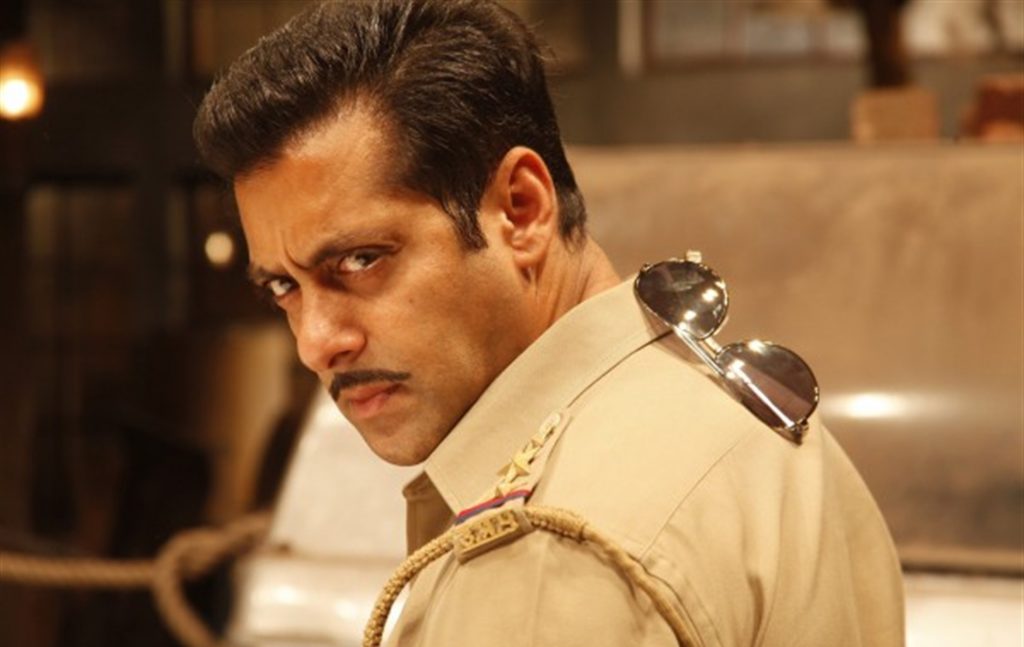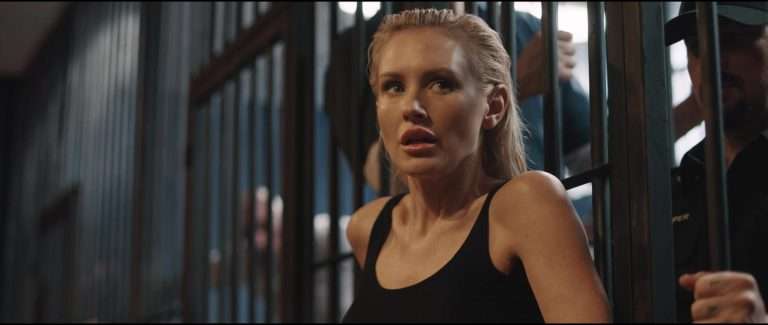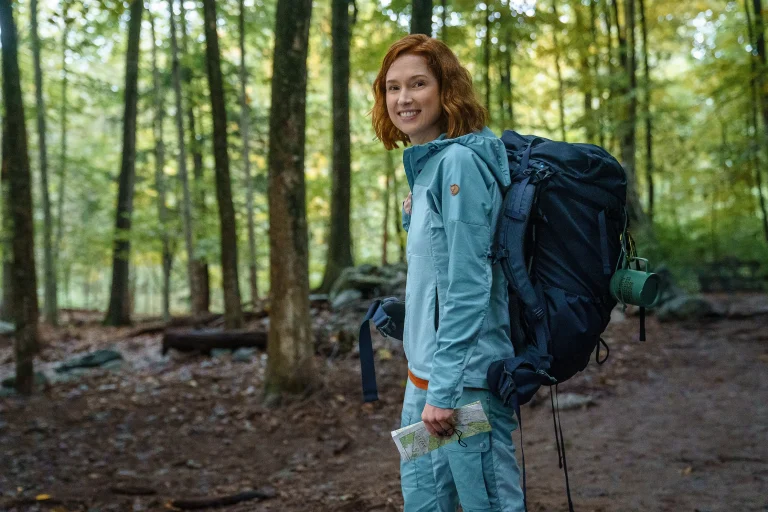Dabangg is the story of a village cop, Chulbul ‘Robin Hood’ Pandey, who deals with corruption and the system according to his own moral compass. The film offers a glimpse into Chulbul’s romantic escapades and his strained relationship with his family, which the local politician Chedi Singh (Sonu Sood) cunningly exploits to his advantage.
When Dabangg first hit theaters in 2010, I couldn’t quite understand the hype surrounding it. It was madness—everyone seemed gaga over it. But why? It had ear-splitting sound effects, and most annoyingly, music that drowned out many of the one-liners delivered by the cast.
It was a spectacle of exaggerated fights and loud sounds, a film where Salman pandered to his audience by ripping his shirt off, driven by the sheer force of his rage. Of course, at the time, a Salman Khan film without a shirtless scene was unthinkable. Like most Hindi films, it had catchy songs and the usual elements of distrust, loss, strained relationships, betrayal, and eventual realization—all packed into a runtime just over two hours.
Related to Dabangg (2010): The Bad Guys in Commercial Bollywood Cinema
Opinions on this film vary. Some consider it the start of Salman mania, which allowed his stardom to swell to an overinflated size before finally bursting with Tubelight. Others dismiss it as a mindless masala entertainer—which, frankly, it is (emphasis on masala, a true paisa vasool film).
There’s a reason it won the National Film Award for Best Popular Film Providing Wholesome Entertainment. We love these films, don’t we? And while we often clamor for content-rich cinema, it would be dishonest to deny the appeal of a film packed with action and melodrama. This kind of masala movie lets us rest our grey cells until the credits roll. Its sole purpose is to entertain, and no one would tire of watching it.
When I first watched this film, it took me a while to grasp the hype. It was an entertainer, loaded with catchphrases that might feel outdated today but remain easily recognizable. This film also helped popularize the term ‘item numbers’ in Bollywood.
None of it felt shoehorned. The script (yes, there was one) and the distinct personalities of the characters made everything fit seamlessly. Without the one-liners, the characters would’ve felt incomplete—but even with them in excess, there’s little room to complain.
This film’s one-liners made it cool. Remember them? Maybe a few? It’s alright if you don’t—we’ve been swamped with so much content over the years. When this film released, streaming services were unheard of. Torrents, VCDs, and DVDs (remember those?) were the main non-cinematic ways to watch films without ads.
These lines became a natural part of daily conversations back then. For instance:
“Hum tum mein itne ched karenge ki confuse ho jaoge ki saans kahan se le aur paadein kahan se.”
(I will make so many holes in you that you will be confused about where to breathe and where to fart.)
You probably remember Salman Khan’s pencil-thin mustache. Many other one-liners from the film might pop into your mind, tempting you to use them in conversation—maybe dropping a dialogue casually to see if your friends recognize it. You might even recall the goggles hanging from the back of his shirt or his cheeky reply to Anupam Kher’s politician character when questioned about this quirky habit.
Thinking of mirroring that style? It’s not a bad idea—monsoons are almost gone, and goggles are making their way out of storage for the sunnier months ahead.
Dabangg, which translates to “Fearless,” perfectly encapsulates its protagonist, played by Salman Khan. “Dimaag se Dabangg” (fearless in the mind) is how his constable describes him when a band refuses to perform at Chulbul’s wedding. This cartoony cop makes you want to hate him one moment, only for his backstory to make you empathize with him the next.
His antics—like breaking into dance while fighting goons when a cell phone rings—are absurdly entertaining. Chulbul Pandey feels like a real-life Chuck Norris or Zlatan Ibrahimovic with his larger-than-life persona. He’s one of the first names that come to mind when you think of Bollywood cops.
The film boasts a cast of esteemed actors like Vinod Khanna, Mahesh Manjrekar, Om Puri, and Dimple Kapadia (the latter later featured in Christopher Nolan’s Tenet). Looking at such names, one wonders when the Khans (Salman included) will start playing age-appropriate characters. Dabangg also served as the launchpad for Sonakshi Sinha (nepotism wasn’t a buzzword back then), who went on to star in several blockbusters over the past decade.
Also featuring Salman Khan: Bajrangi Bhaijaan (2015): 5 Reasons to Watch
It’s a quintessential masala film, beloved by audiences who enjoy loud music and over-the-top fight scenes. The film spawned a sequel (Dabangg 2 in 2012) and a third installment (Dabangg 3, released in 2019). It’s also been remade in Tamil as Osthe and in Telugu as Gabbar Singh.
Dabangg cemented Salman Khan as the box-office king of the early 2010s, delivering back-to-back hits after Wanted (2009), breaking a streak of flops. Even today, fourteen years later, as Salman turns 59, audiences wouldn’t mind rewatching it on TV or streaming platforms.
Perhaps, even if you didn’t like it back in 2010, watching it now might change your perspective. After all, Salman Khan’s body of work doesn’t leave us with too many watchable options.









![Neruda [2016] : JIO MAMI Mumbai Film Festival Review](https://79468c92.delivery.rocketcdn.me/wp-content/uploads/2016/11/NERDUA1.jpg)
